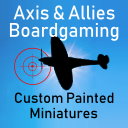Books may be written (and have) on Canada’s impact on the war.
Please also note that we were an independant nation for all intents and purposes . . . .
Consider a few occurrances:
Diepe will continue to be one of the most controversial episodes of the war - a failure by some, a success by others - a Canadian sacrifice of epic proportions.
Holland was liberated to a huge extent by the Canadians (while we sheltered its Queen).
Juno Beach will long be a source of pride for us - On June 6, 1944, the 3rd Canadian Division landed on Juno Beach in the Battle of Normandy and sustained 50% casualties in their first hour of attack. By the end of D-Day, the Canadians had penetrated deeper into France than either the British or the American troops at their landing sites, overcoming stronger resistance than any of the other beachheads except Omaha Beach. In the first month of the Normandy campaign, Canadian, British and Polish troops were opposed by some of the strongest and best trained German troops in the theatre, including the 1 SS-Leibstandarte Adolf Hitler, 12th SS Hitler Jugend Panzer Division and the Panzer Lehr Division. Several costly operations were mounted by the Canadians to fight a path to the pivotal city of Caen and then south towards Falaise. (wiki)
Belgium - One of the most important Canadian contributions was the Battle of the Scheldt. The British had liberated Antwerp, but that city’s port could not be used until the Germans were driven from the heavily fortified Scheldt estuary. In several weeks of heavy fighting in the fall of 1944, the Canadians succeeded in defeating the Germans in this region.
The effects of one man - Sir William Stephenson - a Winnipeg native known as “Intrepid” is considered to be the greatest spy of all time and was instrumental in bringing the US into the war, acquiring and determining the secrets of Enigma, and pretty much co-ordinated the espionage efforts in the west, and liberated Danish atomic scientist Niels Bohr.
If i may borrow from the Canadian Defence webpage . . .
More than one million Canadians and Newfoundlanders served in the Second World War. Of these more than 45,000 gave their lives, and another 55,000 were wounded.
the battle of Britain - Many Canadians served in the squadrons of Spitfires and Hurricanes which repulsed the Luftwaffe in the summer of 1940. No. 1 Fighter Squadron, RCAF, equipped with modern eight-gun fighters, became the first Royal Canadian Air Force (RCAF) unit to engage enemy planes in battle when it met a formation of German bombers over southern England on August 26, 1940. It shot down three of them and damaged four others with the loss of one pilot and one plane. Its next meeting with the enemy was not as fortunate as it was attacked out of the sun by Messerschmitts and lost three planes. By mid-October the squadron had accounted for 31 enemy aircraft destroyed and probably 43 more destroyed or damaged. It lost 16 Hurricanes; three pilots had been killed.
Other Canadians flew with the Royal Air Force during that difficult period. No 242 (Canadian) Squadron RAF, which had been formed in 1939 from some of the many Canadians who flew directly with the Royal Air Force, was not reinforced with Veterans from the French campaign and joined in the battle. On August 30, nine of its planes met a hundred enemy aircraft over Essex. Attacking from above, the squadron claimed 12 victories and escaped unscathed.
Canadians also shared in repulsing the Luftwaffe’s last major daylight attack. On September 27, 303 Squadron RAF and 1 Squadron RCAF attacked the first wave of enemy bombers. Seven, possibly eight enemy planes were destroyed, and another seven damaged. The Royal Canadian Air Force thus received its baptism of fire.
For six long years the Canadian Navy was one of the principal contenders in what was to be known as the Battle of the Atlantic. Beginning the war with a mere 13 vessels and 3,000 men, the Royal Canadian Navy ended it with 373 fighting ships and over 90,000 men. In the crisis of 1940, when German armies were marching into France, four destroyers of the RCN, were sent to the English Channel where they provided aid in the evacuation of forces, landed military troops, and carried out demolitions.
One of Canada’s most distinctive contributions to the war effort was the British Commonwealth Air Training Plan. Under an agreement signed in December 1939, Canada provided training facilities for airmen from all parts of the Commonwealth. Far away from actual fighting, and with excellent flying conditions, Canada was ideally suited to such a program. She also possessed a great deal of the necessary expertise and facilities. A large number of Canadians trained during the First World War were still active airmen and the opening up of the vast northland had created others.
This was a gigantic undertaking. An army of experts had to be assembled, airfields developed, and equipment, including airplanes, procured. Training began in the spring of 1940. By the end of 1943 more than 3,000 students were graduating each month. By the end of the war the BCATP had produced 131,553 aircrew including pilots, wireless operators, air gunners and navigators. Of these more than 55 per cent were Canadians
This is just the beginning - but i’m tired now. For those interested in the less condensed version - check out “Canada Remembers”:
http://www.vac-acc.gc.ca/remembers/sub.cfm?source=history/secondwar/Canada2
http://en.wikipedia.org/wiki/Military_history_of_Canada_during_the_Second_World_War






